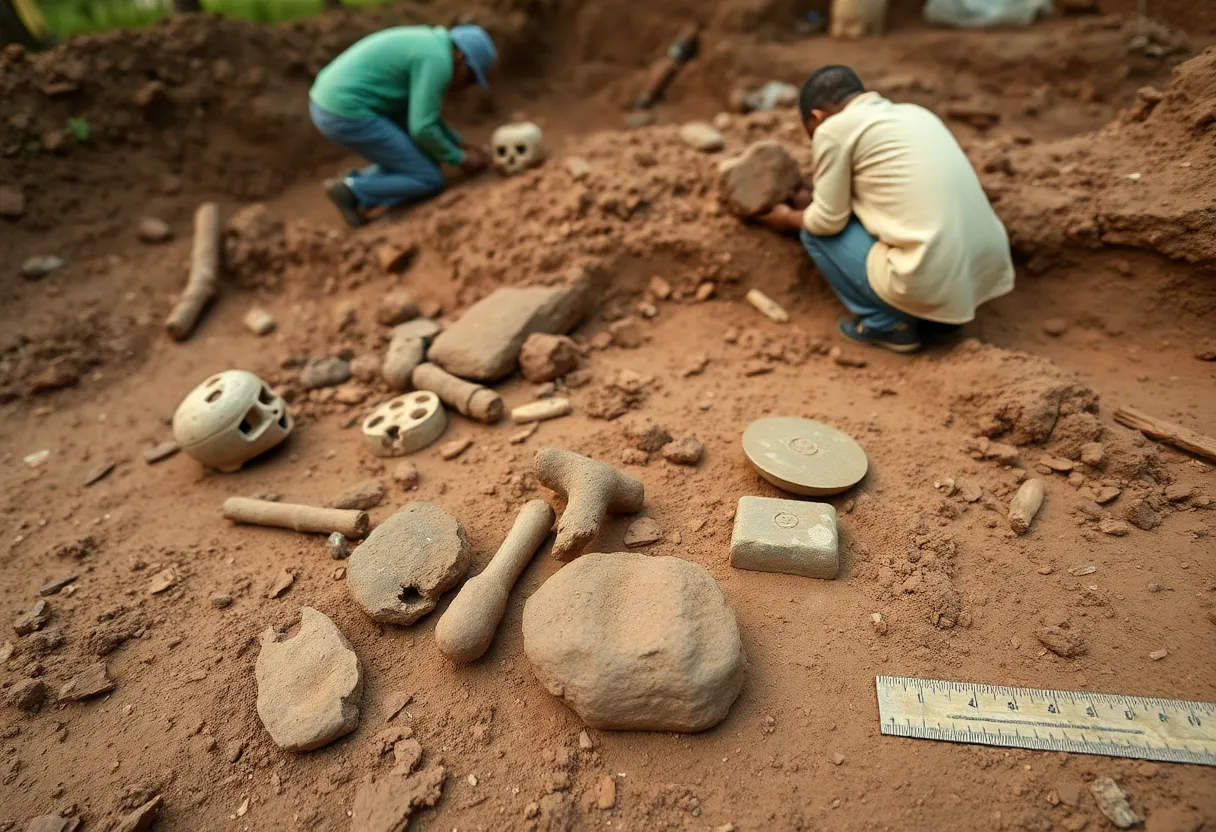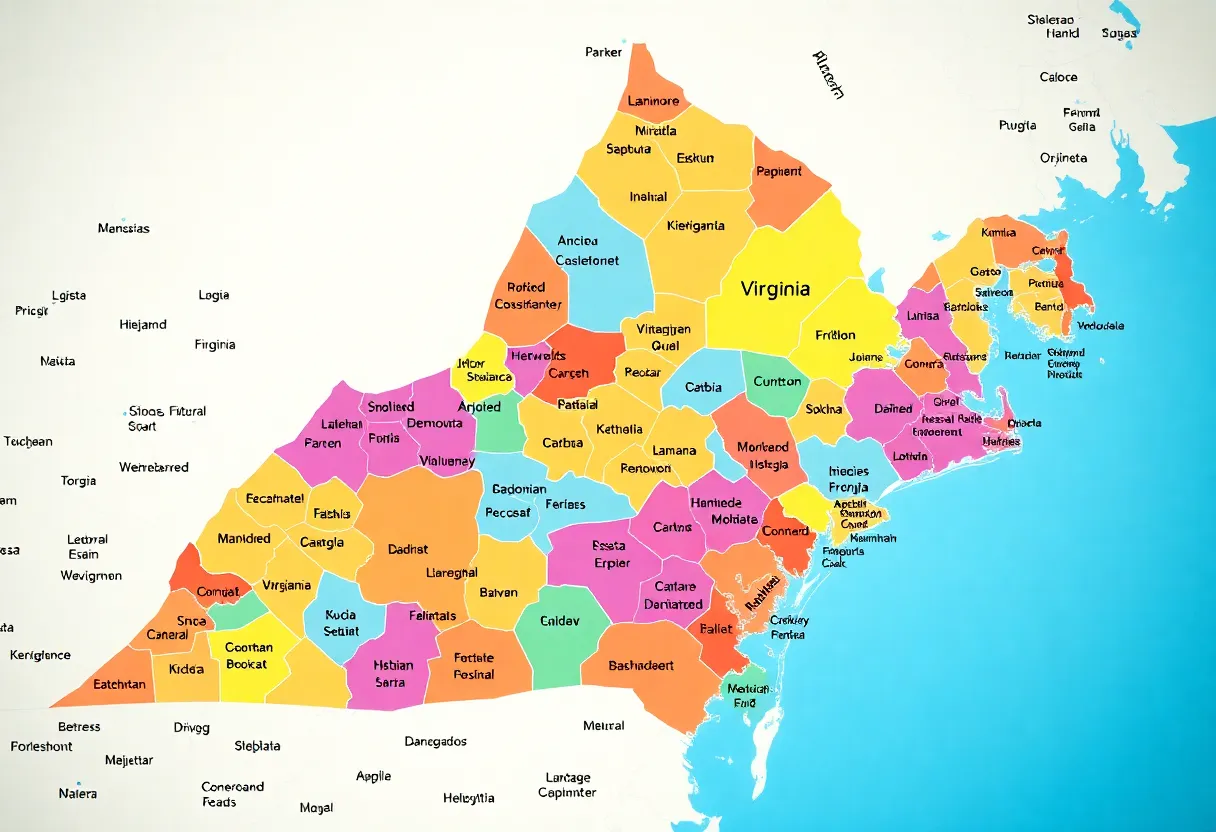News Summary
Recent excavations at the Williamsburg Bray School site have uncovered significant artifacts, revealing the history of one of the first schoolhouses for Black children in America. The site, operational in the 1760s, educated both enslaved and free children, and the findings include items that illustrate the daily life of students during that era. This excavation highlights the legacy of Black education and its impact on literacy and knowledge access in the United States.
Williamsburg, Virginia – Archaeological excavations at the Williamsburg Bray School site have uncovered significant artifacts, shedding light on one of the oldest known schoolhouses for Black children in America, which operated in the 1760s. The excavation, taking place under William & Mary’s Gates Hall as part of ongoing renovations, has revealed the near-complete foundation of the school, a pivotal structure in the history of Black education in the United States prior to the American Revolution.
The Bray School educated both enslaved and free Black children, hastening the spread of literacy and knowledge during a time when such opportunities were rare. The excavation team, led by archaeologist Tom Higgins, has made remarkable findings that include a chimney base, a cellar, and hundreds of artifacts dating back several centuries.
Among the most notable discoveries are pieces of slate pencils estimated to be around 250 years old, a wig curler, jewelry, and pottery fragments referred to as colonoware sherds, which were created by enslaved Africans. Other findings include broaches and ceramics that likely date from when the building served as a dormitory for female students. These items collectively reveal an extensive range of daily life during the period from the 18th century to the early 20th century.
The Bray School was established by an Anglican charity in England with the goal of teaching Christianity and basic education to enslaved individuals. However, following the school’s closure, Virginia enacted laws banning education for enslaved people, motivated by fears of the power that knowledge could grant them. This move significantly restricted opportunities for Black education and contributed to a legacy of educational disparity.
The original Bray School building, constructed in 1760, largely fell into obscurity after it ceased operations, transitioning from a schoolhouse to housing families and then serving as a dormitory for female Methodist students between 1924 and 1930. The current excavation was initiated following a generous $30 million anonymous donation designed to transform Brown Hall into Robert M. Gates Hall, named in honor of the former U.S. Secretary of Defense.
The excavation revealed a substantial cellar measuring 36 by 18 feet, with two distinct levels. The array of artifacts includes more mundane items such as buttons, white clay pipes, and glass pieces depicting Minerva, the Roman goddess of wisdom, likely from the 20th century. These findings will contribute to a new exhibit at Gates Hall that aims to contextualize the historical foundation of the Bray School.
The site officially opened as a museum earlier this year on Juneteenth, a commemoration of the emancipation of enslaved individuals in the United States. This restoration marks a pivotal moment in recognizing and honoring the educational heritage of Black Americans.
The discoveries made during the excavation serve as a crucial component in the broader effort to reflect on America’s complex history and the impact of education on enslaved individuals. Experts, such as Dr. Maureen Elgersman Lee, underscore that the understanding of Black education’s historical context remains incomplete, highlighting the need for ongoing research and discussion surrounding this important aspect of American history.
As excavation efforts continue, Williamsburg’s Bray School site stands as a testament to the resilience and pursuit of education among Black communities during a tumultuous period in history. The artifacts unearthed not only provide insight into the lives of students at the Bray School but also contribute to the larger narrative of education and empowerment among marginalized groups in America.
Deeper Dive: News & Info About This Topic
HERE Resources
Additional Resources
- Washington Post: Williamsburg Bray School Discovery
- WAVY: Colonial Williamsburg Cuts Ribbon on Historic Bray School
- Black Enterprise: Williamsburg Bray School Opens Juneteenth Museum
- All That’s Interesting: Virginia’s Williamsburg Bray School Foundation
- New York Times: Bray School, Virginia Juneteenth
- Wikipedia: Education in the United States
- Google Search: Bray School Virginia
- Google Scholar: Black Education History
- Encyclopedia Britannica: Education
- Google News: Williamsburg Bray School

Author: STAFF HERE WILLIAMSBURG WRITER
The WILLIAMSBURG STAFF WRITER represents the experienced team at HEREWilliamsburg.com, your go-to source for actionable local news and information in Williamsburg, James City County, and beyond. Specializing in "news you can use," we cover essential topics like product reviews for personal and business needs, local business directories, politics, real estate trends, neighborhood insights, and state news affecting the area—with deep expertise drawn from years of dedicated reporting and strong community input, including local press releases and business updates. We deliver top reporting on high-value events such as Williamsburg Farmers Market, Yorktown Market Days, and Busch Gardens Food & Wine Festival. Our coverage extends to key organizations like the Greater Williamsburg Chamber of Commerce and Colonial Williamsburg Foundation, plus leading businesses in education and hospitality that power the local economy such as College of William & Mary, The Williamsburg Winery, and Sodexo. As part of the broader HERE network, including HEREVirginiaBeach.com, we provide comprehensive, credible insights into Virginia's dynamic landscape.





